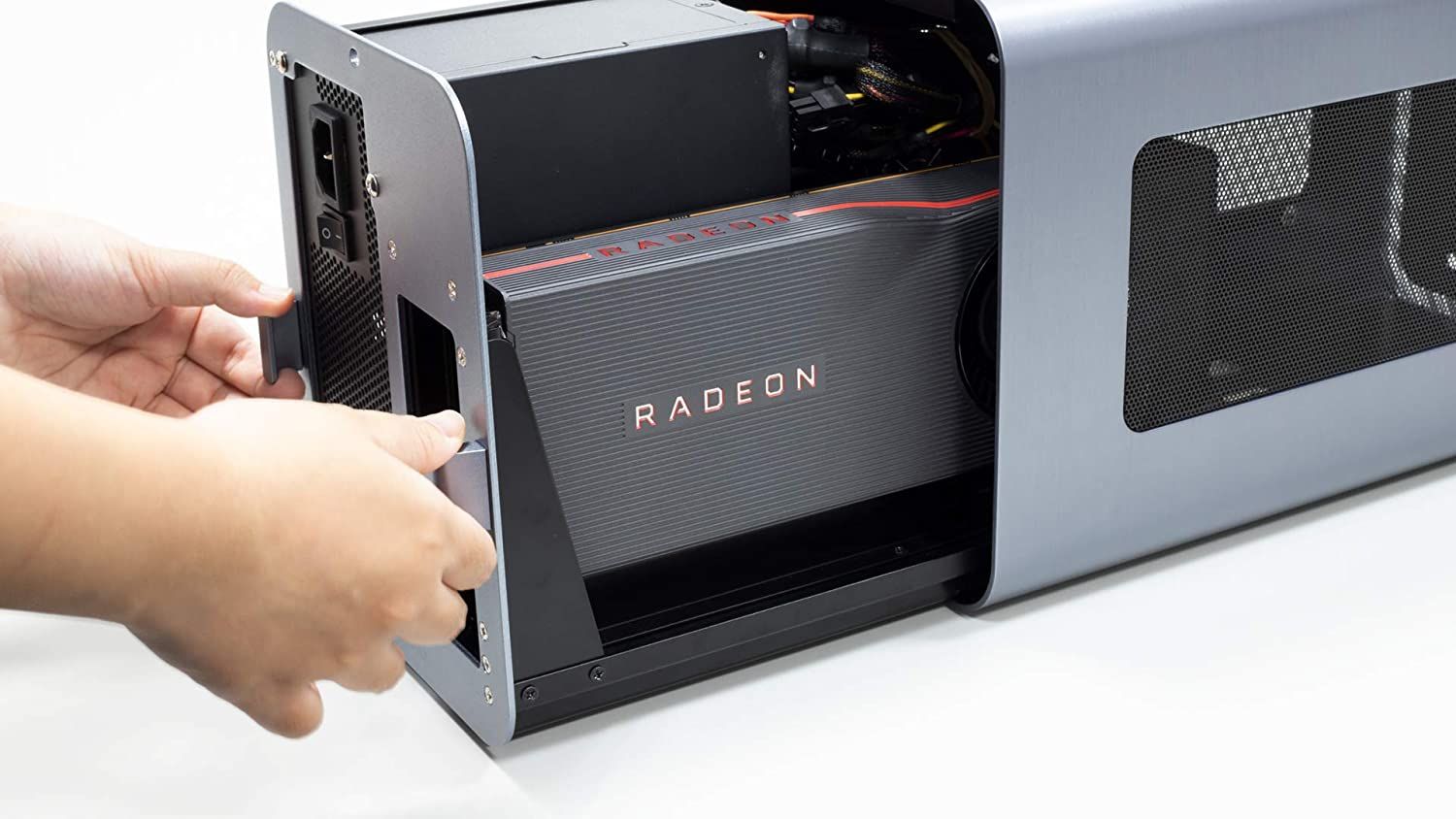Using an eGPU with your Mac mini can be an excellent way to make the most of the small enclosure while still achieving excellent graphics performance for tasks like gaming and image processing. In this guide, we'll explain what an eGPU can add to your setup, how they work, and whether it's worth splashing some extra cash for this neat little bit of kit.
What Is an eGPU?

Basically, an eGPU is a graphics card in an external enclosure that can be plugged into your Mac in order to improve graphical performance. Macs have always been notorious for having insufficient graphics processing units, mostly due to their focus on other operational mechanisms and the fact that their flagship laptops simply don't have the space for large GPUs.
Generally, an eGPU includes a graphics card itself, some form of cooling for the card, a power supply, and sometimes a PCIe interface.
The PCIe, or Peripheral Component Interconnect Express, is a high-speed interface used to connect more GPUs, LAN ports, SSDs, USBs, and more to the computer's motherboard via the eGPU. These systems are usually plug and play, where you can simply attach it to your device and take advantage of much-improved graphics performance, thus improving processes that involve detailed graphics.
Traits of a Good eGPU
First off, there are two main types of eGPUs, both of which determine their full potential in terms of power and performance. These are pre-installed and swappable eGPUs.
Pre-installed eGPUs, as the name suggests, come with a built-in graphics card and are probably the most common type of eGPU, seeing as PC users will often buy and install their own cards themselves.
Swappable eGPUs may or may not come with a graphics card, but often include a series of compatible cards that can be slotted into your external housing at any time. The key consideration with these eGPUs is that there may be a wattage limit to how much power they can acceptably run with from a card. eGPUs with a 300W to 500W max rating will provide adequate performance for gamers, graphic designers, or movie buffs; however, ones that can take 800W+ will almost definitely protect your device from the next generation of software.
eGPUs should also be weighed up for their noise output, and whether one or more fans are used. The trade off is that a quieter unit will heat up more easily and potentially throttle performance, while a unit with two fans will be louder but ultimately ensure consistent performance.
Lastly, the consideration of other features can be a big one for consumers, with various eGPUs containing add-ons like extra USB or Thunderbolt ports, extra card slots for swappable eGPUs, bonus storage capacity, or even added battery life for the device you're using it with.
In terms of a few notable brands that are worth looking into, Razer, Radeon, AORUS, BlackMagic, ASUS, and Sonnet all offer high performance eGPUs to meet most budgets. These devices will range anywhere from around $300 to as much as $1,200 or so. The right choice for you will ultimately come down to what you're looking to get out of it. They are all compatible with Mac mini computers outside of the M1 models, which we'll talk about below.
Pitfalls of the M1 Mac mini

Unfortunately, one of the biggest issues in this area is that the new M1 Mac mini does not support eGPUs. Perhaps Apple did not see the need to provide support because of the upgrades and optimizations with the M1 chip, or maybe it was trying to reduce Apple users' reliance on third-party brands and external devices.
The integration of the M1 chip and built-in GPU are, to some people, a game-changer, and make the need for an external eGPU much less likely even for the entry-level version. However, for users who already have one of these external cards, it won't be possible to plug and play with a new M1 Mac.
It is also worth mentioning that not all apps support software acceleration using an eGPU, and you should check with the app's developer to find out if this is the solution for you. There are some individual eGPU and OS issues that you might need to be aware of as well. Check them all out on the Apple website.
Mac mini computers seem to be in the clear for any issues apart from the rather large one of compatibility with M1 devices, but just keep it in mind if you're considering a purchase.
eGPUs Can Be an Excellent Addition to Your Arsenal
As we've talked about, for users looking to get some extra performance out of their devices without having to buy an entirely new Mac mini, external GPUs can be a really great and affordable option. With the exception of new M1 Mac mini, which is not compatible with eGPUs, you can simply plug in a pre-installed or swappable graphics card, and feel the power of enhanced graphical performance.